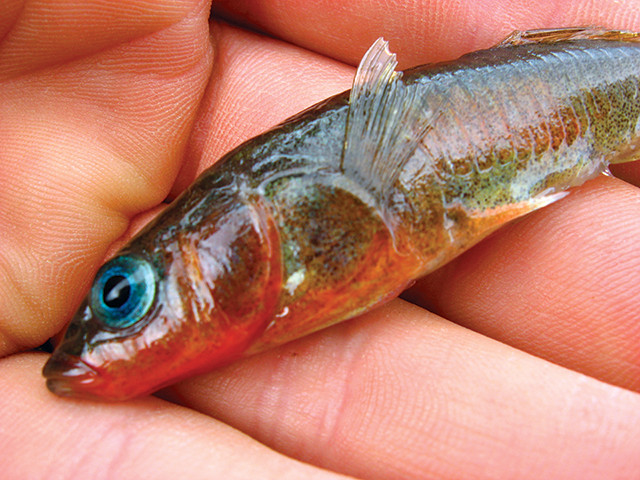
by Mary Caperton Morton Thursday, April 21, 2016

A male three-spined stickleback. Credit: Mark Currey.
Evolution is often thought of as occurring over very long timescales, but as a tiny Alaskan fish demonstrates, significant changes can take place in just a few generations.
After the magnitude-9.2 Alaska earthquake in 1964, several meters of tectonic uplift reshaped the landscape and created new freshwater ponds on islands in Prince William Sound and the Gulf of Alaska. A new study of three-spined stickleback fish found in these ponds today suggests that the formerly marine fish evolved very quickly to adapt to the new freshwater environment.
Using rapid genome-sequencing technology, and by comparing the freshwater fish to saltwater species of stickleback, researchers led by Emily Lescak at the University of Alaska at Fairbanks showed that the fish’s external features — including its eyes, shape, color, bone size and body armor — changed, as did its genes. Stickleback are found in both marine and freshwater environments throughout the Northern Hemisphere, indicating the fish likely has portions of its genome that are readily adaptable to either environment, the team wrote in Proceedings of the National Academy of Sciences.
“In some of the populations that we studied, we found evidence of changes in [as little as] 10 years,” said William Cresko, a biologist at the University of Oregon and a co-author of the study, in a statement. The work “indicates that evolutionary change can happen quickly, and this likely has been happening with other organisms as well.”
© 2008-2021. All rights reserved. Any copying, redistribution or retransmission of any of the contents of this service without the expressed written permission of the American Geosciences Institute is expressly prohibited. Click here for all copyright requests.